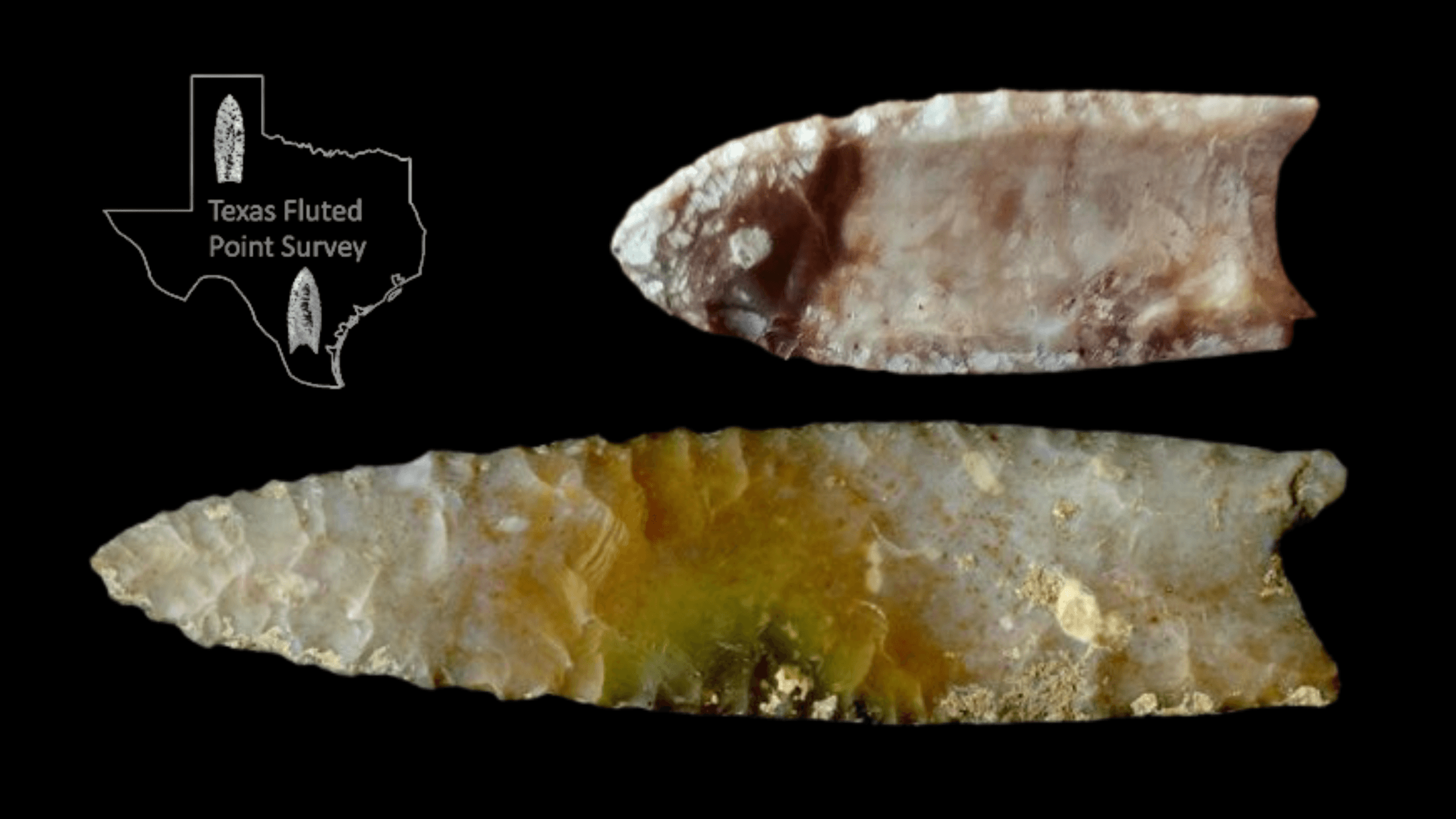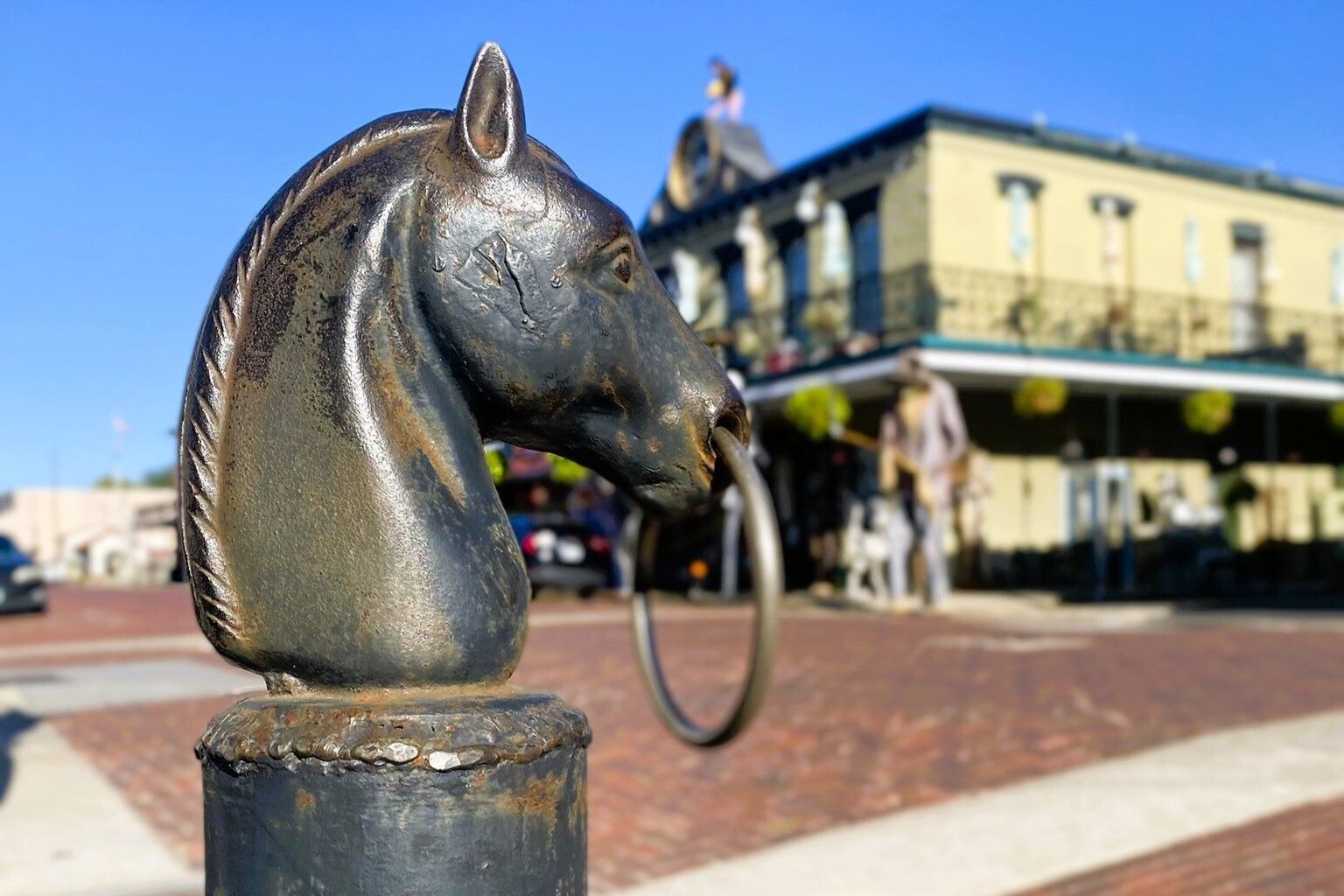
We are excited to announce that the Texas Historical Foundation has awarded its 2025 Annual Grant to the Texas Fluted Point Survey (TFPS) project. Dr. Alan Slade, an archeologist at the Texas Archeological Research Laboratory at UT Austin, provides an update on the survey and discusses its significance in understanding the trajectory of human history in North America.
More than 10,000 years ago, prehistoric peoples in Texas crafted stone spear points to hunt mammoths, bison, and other animals. These finely made tools — known today as projectile points or, colloquially, as “arrowheads” — are among the oldest evidence of human life in North America.
The earliest tools come from the Folsom tradition around 12,000 years B.P. (Before the Present), and from the Clovis tradition around 13,500 years B.P. At the Gault site in Central Texas, archeologists have uncovered both Clovis and Folsom points and, for the first time, pre-Clovis points that prove that Paleoindians inhabited Texas far earlier than previously thought.
For nearly forty years, archeologists have been documenting where Clovis and Folsom tools are found across the state. What began in 1985 as a survey of Clovis points by Southern Methodist University archeologist David Meltzer has now evolved into the Texas Fluted Point Survey, which tracks both Clovis and Folsom finds. Today, more than 1,200 Clovis points and nearly 500 Folsom points have been recorded across Texas.
The maps built from this research reveal fascinating patterns. Central Texas has the highest number of Clovis points, with major finds at the Gault Site in Bell County and the Hogeye Cache in Bastrop County. Along the coast, McFaddin Beach in Jefferson County has also yielded over 100 points. Folsom tools, on the other hand, are especially concentrated in far West Texas, with over 100 found at the Chispa Creek Site in Culberson County.
Much of this progress with documenting locations where the points were found comes not only from archeologists but also from private collectors and community members who have shared their discoveries. In recent years, previously unpublished records and contributions from individual researchers have added hundreds of new entries to the survey. Currently, there are over 70 new Clovis and nearly 25 new Folsom records available for inclusion in the survey pending analysis and verification against existing records for duplicity. Thanks to support from the Texas Historical Foundation, these finds are being carefully documented for the Texas Fluted Point Survey so they can inform future research.
Importantly, the work doesn’t stop at Texas’s borders. Archeologists are also looking at finds from neighboring states and northern Mexico to better understand how the first peoples of North America traveled and hunted. A comprehensive review of the borderlands surrounding Texas would provide important clues to early Paleoindian lifeways and mobility patterns in parts of southeast and southwest North America, while complementing the Survey.
The Texas Fluted Point Survey is important because it is more than recording artifacts — it preserves the story of the very first Texans. By mapping where these ancient tools are found, researchers can trace how people moved across the land, adapted to its challenges, and laid the foundation for thousands of years of human history that followed. In a state where history runs deep, these discoveries remind us that our story began long before written records, with the ingenuity and resilience of its earliest people.
Images
Main (top) image: A Folsom (top) point and Clovis (bottom) point included in the Texas Fluted Point Survey. Image courtesy of the Texas Archeological Research Laboratory (TARL).
Middle image: Maps showing concentrations of Clovis and Folsom points by county, courtesy of TARL.
Bottom image: Dr. Alan Slade at the TARL office, courtesy of Dr. Clark Wernecke.



